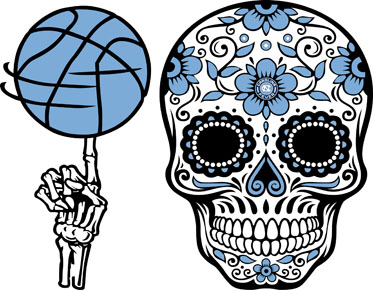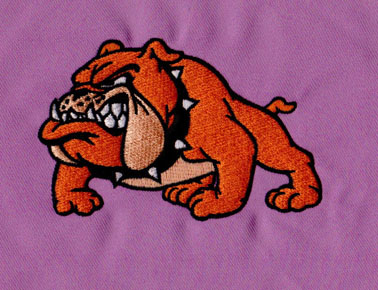8 Simple Steps to Convert Hand Drawings into Vector Arts
Converting hand drawings into vectors is a
crucial process for graphic designers and artists. Vector images allow for
scalability and flexibility, making them ideal for various applications. In
this article, we will explore eight simple steps to convert hand drawings into vectors, enabling you to bring your
sketches to life digitally.
I. Prepare Your Hand Drawing
Before starting the vector conversion process, ensure that your hand drawing is clean
and well-defined. Follow these steps to prepare your drawing:
1. Use Quality Paper: Begin with a smooth,
high-quality paper that minimizes texture and allows for clean lines.
2. Use Dark Ink: Utilize a fine-tipped pen or
marker to create clear and bold lines in your drawing.
3. Erase Unwanted Marks: Carefully erase any
unwanted lines or smudges to ensure a clean and clear final result.
II. Scan or Photograph Your Drawing
To vectorize your hand drawing, you will need
to scan or photograph it. Follow these guidelines for best results:
1. Scanning: Place your drawing on a flatbed
scanner and ensure it is aligned properly. Scan at a high resolution (300 DPI
or more) to capture fine details.
2. Photographing: If scanning is not an option, photograph your drawing in good lighting conditions. Ensure the image is well-focused and capture it from directly above to minimize distortions.
III. Import the Image into a Vector Editing Software
Once you have a digital copy of your hand
drawing, import it into a vector editing software. Adobe Illustrator is a
popular choice for this purpose. Follow these steps:
1. Open a New Document: Launch Adobe
Illustrator and create a new document with the desired specifications.
2. Import the Image: Go to "File"
and select "Place" to import your hand drawing into the document.
IV. Adjust the Image Settings
To prepare the hand drawing for vectorization,
adjust the image settings. Follow these steps:
1. Lock the Image Layer: Select the image and
lock it in place to prevent accidental modifications.
2. Adjust Brightness and Contrast: Use the
software's adjustment tools to optimize the brightness and contrast of the
image. This step helps improve the clarity of the lines.
V. Trace the Image
The next step involves tracing the hand
drawing to create vector paths. Follow these steps:
1. Select the Image: Click on the image to
select it.
2. Choose the Image Trace Option: Navigate to
the "Object" menu, select "Image Trace," and then click on
"Make."
3. Adjust the Tracing Settings: Use the settings panel to adjust parameters such as threshold, paths, and colors. Experiment with different settings until you achieve the desired result.
VI. Refine and Edit the Vector Paths
After the image is traced, you can refine and
edit the vector paths. Follow these steps:
1. Expand the Image Trace: With the traced
image selected, go to the "Object" menu, select "Expand,"
and choose the appropriate options.
2. Edit the Paths: Use the vector editing
tools in the software to refine the paths, adjust curves, and remove any unwanted
elements.
VII. Apply Colors and Effects
Once the vector paths are refined, you can add
colors and effects to your illustration. Follow these steps:
1. Fill Colors: Use the software's color tools
to apply colors to different areas of your vector drawing.
2. Add Effects: Experiment with various
effects such as gradients, shadows, and textures to enhance the visual appeal
of your artwork.
VIII. Save and Export Your Vector Art
The final step is to save and export your vector artwork. Follow these guidelines:
1. Save the Project File: Save the project
file in the native format of your vector editing software (e.g., AI for Adobe
Illustrator).
2. Export the Artwork: Export the artwork in a suitable file format, such as SVG, EPS, or PDF, depending on your specific needs.
Vector Art Conversion Services
If you prefer professional assistance or lack
the necessary software skills, you can rely on vector art conversion services. These services provide expertise
and advanced tools to convert your hand drawings into high-quality vectors.
They ensure precision, scalability, and a faster turnaround time, allowing you to
focus on your creative work.
FAQ
1. Can I convert colored hand drawings into
vectors?
Yes, colored hand drawings can be converted
into vectors. After tracing the image, you can apply colors to the vector
paths.
2. Are there any limitations to the complexity
of hand drawings for vector conversion?
While most hand drawings can be converted into
vectors, highly intricate and detailed artwork may require additional manual
editing to ensure accurate vectorization.
3. Can I edit the vector paths after the
conversion?
Yes, one of the advantages of vector art is
its editability. After the vector art conversion,
you can refine and edit the vector paths using the vector editing tools in the
software.
Converting hand drawings into vectors allows
you to leverage the benefits of scalability, flexibility, and editability in
your digital artwork. By following these eight simple steps, you can transform
your sketches into professional-grade vector illustrations. Whether you choose
to do it yourself or opt for vector conversion services, this process opens up a world of possibilities for your creative
projects.



